Being a millennial is not all it’s cracked up to be. We finally got to that point in history where we can just kick back and take a minute to enjoy the fruits of this technologically driven world, a luxury that previous generations could not afford, and we are usually criticized for it. In this seemingly comfortable existence, the real burden is often psychological. Born in the middle of big political shifts, with late-capitalism slowly taking over and the Internet on the rise, all of it happening at an accelerated rate, millennials have lived and breathed post-modernism since day one. Self-referentiality, irony, cynicism and general pessimism, the hallmarks of post-modern culture have left their marks on the millennial psyche. Ours is a culture that takes nothing seriously, that is constantly using self-deprecation as a protective shield, always looking inward never outward, fixated on pointing things out and deconstructing them, but ultimately offering no solution. This absence of resolution has left us confused and disoriented in a fast-paced detached world that demands a quick reaction. The late David Foster Wallace even went as far as to warn against the dangers of post-modern culture on the psychological well-being of future generations.
For most of us born in the late 80s and early 90s, our first contact with post-modern culture was via pop-culture. With the wide spread of cable and middle-class parents at work all day, everyone’s afternoon past-time became the TV; growing up on cynical shows like South Park and flashy MTV video-clips that depicted society as a meaningless spectacle left us feeling detached and numb. Post-modern culture made us highly critical of our surroundings and, most importantly, highly critical of ourselves. In the art world this translated into everything being theorized and deconstructed to bits, art as a new form of cold-hard scientific analysis which often works with archives, evidence, documentation. Knowledge is actualized via context and deconstruction, truth is revealed via singular interpretations. But then what? It’s as if there is anticipation in the air, everyone is waiting for something to give in the midst of a culture which ultimately offers no redemption. The natural response came in the form of turning hyper self-awareness and critical thinking on one’s own sensitivity and appealing to empathy in order to move forward.
This is how the new sincerity movement or metamodernism started to emerge as a natural response to post-modernism’s reign of indifference. Although it relies on the same tools, such as cynicism and irony to build a narrative, it actually conveys a message of hope and purposes a resolution through genuine human connection. This revolution of emotions first started with music, slowly making its way into TV sitcoms, books, cinema and eventually the art world. Metamodernism has a strong anti-nihilistic message and turns its back on the pessimistic views of post-modernism, it’s like a return to modernism, but instead of grand narratives and idols, it harnesses the self-awareness and individualism that was passed on to the current generation and appeals to honesty and emotion as a means for expression. This is already starting to take shape in today’s pop-culture, meanwhile, the art world is still buried deep in art statements and self-irony. It’s still trying to figure out how to illustrate sensitivity in a contemporary way. But every revolution calls to action, and so we turn to performance art as the very pulse of this movement.
Performance art is the sincerest art form there is. It’s live and unmediated, it’s authentic. It was always the rebel of the art world, spontaneous, unpredictable, messy, sometimes dangerous, unquantifiable, hard to narrow down. And right now, with Anne Imhof snatching this year’s Golden Lion at the Venice Biennale with her piece Faust, performance art is gaining more and more popularity and recognition. She might very well be the poster-child for metamodernism, somehow managing to capture the very essence of our era, with all its apathy, confusion, expectancy and lust for life, and wrap it up in a very fashionable package. Faust couldn’t possibly be described. It’s meant to be experienced because it conveys that feeling that everyone has nowadays but can’t really pinpoint it, better yet it also acts upon it with powerful gestures and actions, stirring up something in the viewer. The underlining themes place the body itself as an object of capitalism and question its capacity for resistance, it’s smart and self-referential, but it also hits close to home. The performers, with their apathetic way about them, strutting around in athleisure wear, portray familiar figures, yet the sincerity and vulnerability with which they perform appear awfully out of place in the sterile gallery space. These kinds of pieces conjure up a vibe rather than an image.
The Czech Republic had it arguably easier when it came to art production in the communist era. Located on the fringes of the Iron Curtain, closer to western freedom, the country had its share of censorship, socialist realism and the “official scene”, especially in the late 60s after the “normalization”, when the Czechoslovak state was forced to adhere to the Moscow Protocol and align with the rest of the Soviet Union. Luckily, a few years prior, Czech artists were getting wind of progressive western trends and were determined to explore alternative art forms like sound-art, experimental poetry and, of course, performance art. This lead to the formation of a so-called underground unofficial scene or “the grey zone”, describing artists who were not part of the official art circle, either cast out or by choice, and who would exhibit their works in alternative or private spaces. The underground movement was eager to exploit all loopholes in the regime’s structure in order to produce the art they believed in.
The group Actual Art in Prague, initiated around Milan Knížák, was one of the first to engage in performance art and radical happenings. Other artists such as Eugen Brikcius, Jan Steklík and Zorka Ságlová were part of underground communities interested in actionism and the Fluxus movement and, albeit for a short while, they brought about a unique democratic view within the socialist regime. Unfortunately, this was abruptly halted by the new shift in the totalitarian regime at the beginning of the 70s. But the damage was done, Czech artists already saw the light.
Performance art quickly became a way for artists to express themselves in lack of a proper space to exhibit. Petr Štembera, Jan Mlčoch and Karel Miler started working with their bodies in order to best convey the oppressive atmosphere of the 70s. They organized secret transgressive events in all sorts of alternative spaces. By this time, Jiří Kovanda made his way in the underground scene. He is considerably known today, but back then, his apolitical, banal gestures in the public space were barely visible: spreading his arms wide in a busy Prague square and letting people pass him by in an attempt to open himself, become vulnerable and connect with strangers – perhaps an early glimpse of new sincerity? His actions may not have been extremely obvious back in the day, but nowadays he is regarded as one of the most respected Czech artists, so much so that intermedia students who wish to pursue performance art often mimic his actions and gestures.
As post-modernism came swooping in after The Velvet Revolution, more and more artists, like Jiří Surůvka, Tomáš Ruller, Michal Pěchouček, Eva Jiřička, Daniela Baráčková, Eva Koťátková, Pavla Sceranková and many others started working with performance art and incorporating it into other mediums, marking a real interest for intermedia which subsequently lead to the inception of multiple intermedia studios at the top art academies in Prague, Brno and other cities.
What is the state of Czech performance art today and how in tune are performers with new trends and movements? Nowadays, performance art is very well integrated in the art scene: you can see it at any significant art event, such as the Fotograf Festival, 4+4 Days in Motion in Prague or The Cuckoo festival in Ostrava, some of the art shows I saw during my 2-week visit to The Czech Republic in October. Naturally, many performances take place especially when there’s an opening, and consequently a large crowd of visitors. However, public happenings occur all the time, without necessarily being tied to any major art shows, and are not regarded as weird or unusual by the mainstream public. This might have something to do with the country’s longstanding tradition in theater.
With Berlin at just a 4-hour train ride away, it makes sense for the new generation of Czech artists to be up to date with the latest artistic trends so I was very curious to see how new sincerity and performance art might go hand in hand. Over the course of my stay, four performers coming from different artistic backgrounds shared with me their visions on art and life, and even though their individual approaches vary in style and concept, I could detect a common denominator in their discourses: a desire for authenticity, for real uncurbed expression and for sincere emotions.
Kateřina Konvalinová was the first to give me some insight into the Czech performance art scene. The 26-year-old intermedia student took me out to lunch and gave me a brief tour of the Prague Academy of Fine Arts. We settled into one of the cozy intermedia studios where she talked about her latest works. I quickly learned that Kateřina is already on-board the new sincerity band wagon when she shared her romantic views on the art world and life in general. Although very aware of the present moment, her immediate artistic context and the various issues within it, as well as the art world at large, she believes that love can save the world. Her most recent work, mingling video and performance art, Love Manifesto encompasses Kateřina’s latest preoccupations. Using post-modern video art techniques, this was her first time working with professional video equipment: high-definition intimate close-up shots of couples, 3D generated futuristic landscapes, monologs in both English and Czech overlapping and frequently changing styles, often turning self-referential and questioning the medium itself. The beautiful imagery and the hypnotizing voices conjure up the idea that having a body is a privilege and the way we’re supposed to handle it, as dictated by contemporary society, doesn’t feel quite right anymore. This very cinematic work culminates with the karaoke version of the cheesy Wicked Game by Chris Isaak, meant to be performed by the artist herself in front of a live audience. Kateřina admittedly can’t sing, yet she bravely pours her soul out as she performs this funny yet very emotional song, proving that she stands by what she believes in. It was very refreshing to see a young artist approaching a broad and cliché subject like love in such a mature way. Her take on a Love Utopia is scattered around many of her performances and video works and she is currently working towards further exploring this concept and narrowing it down. She also collaborates with other performers that share her vision.
One such person is Lukas Hofmann, aka Saliva, a young Czech artist of international fame who you might have read about in i-d vice or sleek-mag. His performances have been described as being similar to those of Anne Imhof and when he first heard that, he wasn’t too happy. That was until he went and saw the performance for himself and, after sitting in the room mesmerized for more than 2 hours, he finally understood what people meant. Like Faust, his pieces last for hours, have no real beginning or end and include a group of fashionable performers who don’t necessarily have formal training, but who happen to connect and work well together, most of the time close friends. They engage each other and a set of objects around them and act out a kind of weird intimacy, deeply personal and very relatable at the same time. Although his performances appear to be improvised, the artist insists on at least a few rehearsals where the group focuses more on the feel of the piece and less on choreography. Lukas has only been performing for a couple of years now, yet he’s clearly struck a chord with his audience and art critics. One of his biggest performances to date is ironically called Retrospective and took place last winter at the National Gallery in Prague, the biggest art institution in the country. Here, he and his crew performed a number of actions based on his musings: discovering individuality and identity in the contemporary era, the superficiality of the everyday, the need to escape seen and unseen structures that govern our fast-paced lives by being more aware of the present moment and ultimately experiencing it. His performances might include two or more people holding their breath for longer and longer stretches of time, them trying to lift each other off the ground or passionately singing the lyrics to Evanescence songs, each at their own pace, gestures that are both amusingly ironic and truly heart felt. Lukas enters a trance when he is performing, he immerses himself in everything he does and encourages others to do the same. Aesthetics obviously play an important role in his pieces: everyone looks very stylish and he regularly incorporates fabrics and garments in his shows for their diaphanous quality as well as being easy to manipulate and transport.
For him, performative practice is the most interesting form of art because it has the potential to move something within you and can put you in a certain state of mind. He maintains that art is something that happens and not necessarily something that is. And Saliva is determined to live by these words. He is very aware of his position within the current global politics and what tools to use in order to successfully address them: his works rely on post-modern devices like self-irony, meta narratives and a lack of resolution yet he takes it one step further with an added dose of vulnerability and sincerity. Saliva’s self-awareness and contemporary sensibility are artistic instruments and he certainly knows how to wield them.
It comes as no surprise that artists in their mid-20s have a firm grasp on the new sincerity movement considering it being such a distinctive feature for the current generation. For them, performance art might very well be the most suitable and illustrative medium that best puts into play the emotion, openness and vulnerability desperately needed in today’s sterile and increasingly institutionalized art world. But what about the sandwich generation’s emotional response to their positioning within contemporary society?
Darina Alster is technically not a millennial, yet her artistic practice and views are certainly aligned with the fresh preoccupations of the independent art sector. Having been born in the late 70s meant she spent her formative years in the midst of social and political turmoil which significantly influenced her artistic route. But unlike most artists from her generation who opted for a detached, analytical perspective on art and current events, Darina has a broader and more dynamic approach that does not explicitly criticize specific social or political issues; she points no fingers, yet her art is always striking and direct. One of her main interest is the duality between natural and artificial, best exemplified in her blending performance art and multi-media. Having studied multi-media in school, she has been making use of video and sound in her work for more than 10 years now: Personal Tarot in 2007, followed by Tarot Mobiles in 2008 are some her earlier attempts at connecting two medias, one from the past and one from the future. Here, she presents the figures of the Major and Minor Arcanas of the Tarot using touch displays or mobile phones containing short video performances of the artist as she embodies these characters. Visitors are invited to interact with the devices. Religion, time and spirituality are some of Darina Alster’s favorite themes which she explores in performances that heavily rely on intricate costumes and make-up. In this sense, she reminded me of the Berlin based Romanian performance artist Viviana Drugă, who dabbles in similar themes and aesthetics. She also loves to invite the audience to actively take part in her happenings, especially when she is performing in the public space: in one of her works she emerges from a box covered in jewels and offers them to the viewers; in another she wears a costume with oversized breasts where she keeps symbolic gingerbread cookies and feeds them to the members of the audience.
Darina is all about creating strong visual imagery using her body and drawing inspiration from personal experiences. Her works may appear transgressive or improvised as she tends to incorporate all sorts of objects, however the elements used play a specific role; nothing is ever left to chance, all has been properly prepared beforehand. Lately, her main focus has been motherhood. When we met at a café in downtown Prague, she was waiting for me with her baby daughter and we quickly started talking about how becoming a mother takes its toll on a woman’s artistic career: very little time for work and networking, essentially missing out on crucial events and being out of the loop. She has experienced these things for herself and instead of taking the obvious artistic route of criticizing patriarchal structures and pointing out their flaws, she continued to perform and started to include her family members in her actions: in some of her performances she recreates figures from artworks like The Thinker, The Madonna or painter Jan Zrzavy’s Cleopatra using costumes and make-up and holding or even breastfeeding her baby daughter while her oldest is running around blowing bubbles. Darina Alster’s art can be considered metamodern through her use of empathy as subversion: motherhood and femininity no longer cripple female artists, instead it fuels them! She is also part of a group called Mothers Art Lovers where mother-artists working with all mediums come together (bringing their kids and partners too), discuss, critique and encourage each other’s projects and keep each other up-to-date. The artworks produced within the group are not limited to touching up on motherhood or feminism, the group aims at offering support and creating a safe space for women to explore the full spectrum of their personal interest with zero constrains, something that Darina has been pursuing since forever. This is the main reason why she started performing in the first place. For her, it was a way of expression free from any outside influence, an art form she could explore at her own pace and make it truly hers. She consciously decided to go against her formal training and seek out a more authentic medium to bring her vision to light and she confessed that she is happy she did not study performance art in school because she is convinced academia would have distorted her vision.
Prague is home to four Intermedia studios: three at the Academy of Fine Arts and another at the Academy of Performing Arts, though I’ve heard that the Body Design studio at the University of Technology in Brno is the best in the country. The Czech academic system has been the same for decades, especially when it comes to art. Each university consists of various studios and each of them has a master professor and a few assistants that oversee the students’ artistic growth. However, many have shared their concern over this dangerously narrow path. The students’ relationship with their studio master can make or break their artistic career: professors promoting students who follow in their footsteps and disregarding those who don’t are not unheard-of. Nowadays however, there are numerous countermeasures in order to prevent all that. The masters, assistants and students all contribute to the studio’s curriculum, guest speakers are constantly invited and there is the possibility of inter-studio exchanges.
Marie Tučková can confirm. She is the youngest of all performers I got a chance to meet; at just 21 years of age, she is just at the beginning of her artistic career and is currently dabbling in multiple art forms. Marie is a student at the Photography studio at the Academy of Arts, Architecture and Design but she can showcase her school work in any medium she likes; her professors offer full support and encourage openness and experimentation. The lack of constrains prompted young Marie to try her hand at all types of art forms for her assignments: from photography and video art to interventions in the public space, durational performances which also incorporate texts, the usage of paint and the participation of other performers. In the piece Koupí-li si záclony, skončí to, jako když zhasne. Drahokam byl ukraden, Venuše přemístěna, lední medvěd odešel žrát (roughly translates to If she buys curtains, it will end up as if she turned off the lights. The gem was stolen, the Venus moved, the polarbear is left to feed itself), the artist spent a few hours each day, over the course of a month, in an underground glass display and performed a number of actions, including decorating the inside of the display with paint or materials, reading, sleeping, playing various musical instruments, inviting other people inside and generally converting the space into a domestic setting. Her latest work, Ursule Uwe / Monumenty lásky involves sculptural elements, text art, music, as well as several female performers, of varying ages and body types, which act out a feminine ritual through spoken word and chants – performance art 101, artistic clichés that are over and done, but nonetheless a crucial stepping stone in one’s artistic route. Marie is still at that point in her career where she can freely experiment without fear of failing or pressure from her peers. This relaxed atmosphere is the perfect environment for a young artist to discover and define their persona and vision. Out of everyone I spoke to, Marie was the only one to have any ties to traditional Czech theater, which she studied alongside music, noticeably influencing her endeavors so far.
Marie still has a lot of soul-searching to do, and plenty of time to do it, until she narrows down her artistic demarche and her conceptual vocabulary, however she already shows a natural affinity for metamodern themes like language in the age of technology and its effects on human interaction, all from an emotional standpoint. Not unlike Kateřina Konvalinová, Lukas Hofmann or Darina Alster, Marie Tučková would rather work with friends and people she is close to for her group performances, regardless of their formal training or experience. Another common element would be the presence of irony, highlighted by cheesy songs, dances or costumes, overturned by floods of empathy. As the post-joke paradigm is slowly coming into its own, self-humor is no longer self-deprecating and used as a defense mechanism, we no longer laugh at our short-comings and simply walk away, now we laugh at them while simultaneously acknowledging and embracing them as part of who we are.
Artists like the ones I had the pleasure of meeting in Prague respond to the problems of the post-modern world as they would to mental illness: they are past the denial stage and are finally acknowledging that there are issues that should be addressed through sincerity, compassion, mutual support and understanding. Their group performances that also engage the audience are akin to rehabilitation group therapies that strive to build intimate and vulnerable settings, ideal for personal growth and healing. Could new sincerity manifested through performance art be the cure for post-modern ennui? This belief echoes throughout Prague’s art scene and beyond, with Czech artists lucidly tackling these issues head-on.
I would like to thank Anna Remešová for putting me in touch with all artists mentioned in this article and Jiří Skála for providing insight into the Czech academic system.
Marina’s residency in Prague was made possible with the support of AFCN.
POSTED BY
Marina Oprea
Marina Oprea (b.1989) lives and works in Bucharest and is the current editor of the online edition of Revista ARTA. She graduated The National University of Fine Arts in Bucharest, with a background i...
marinaoprea.com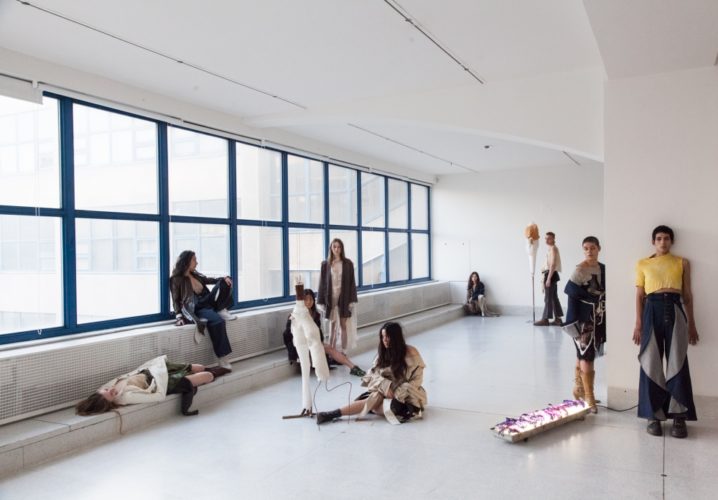



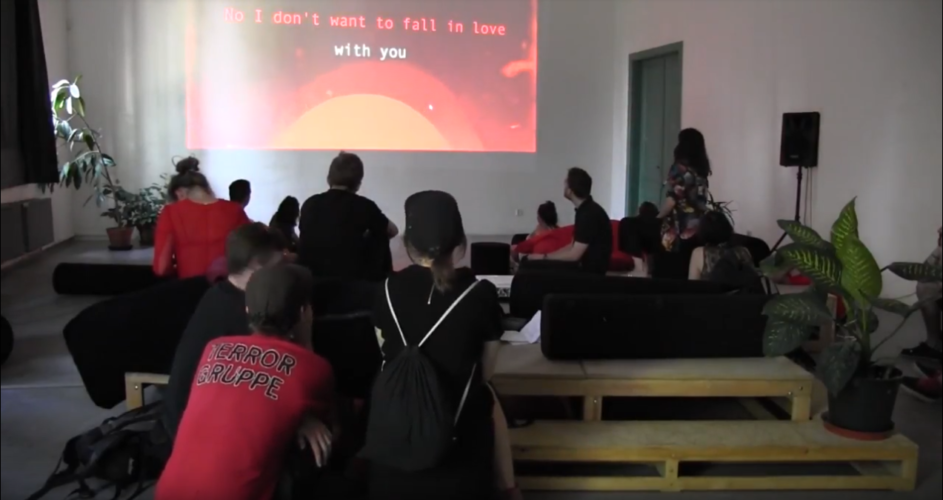

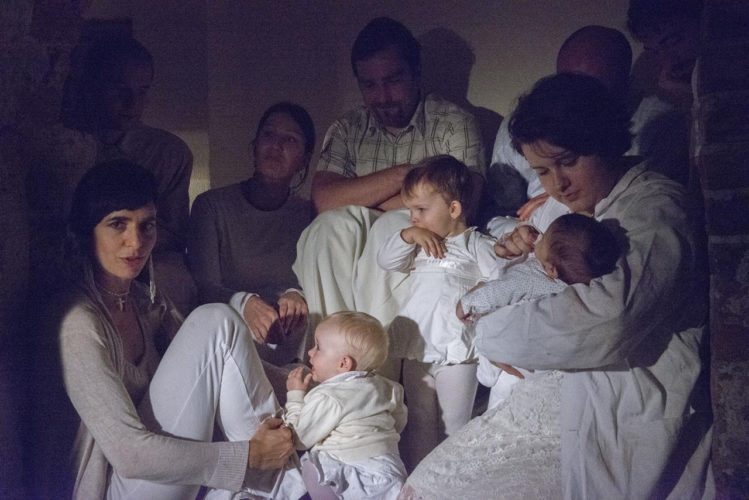
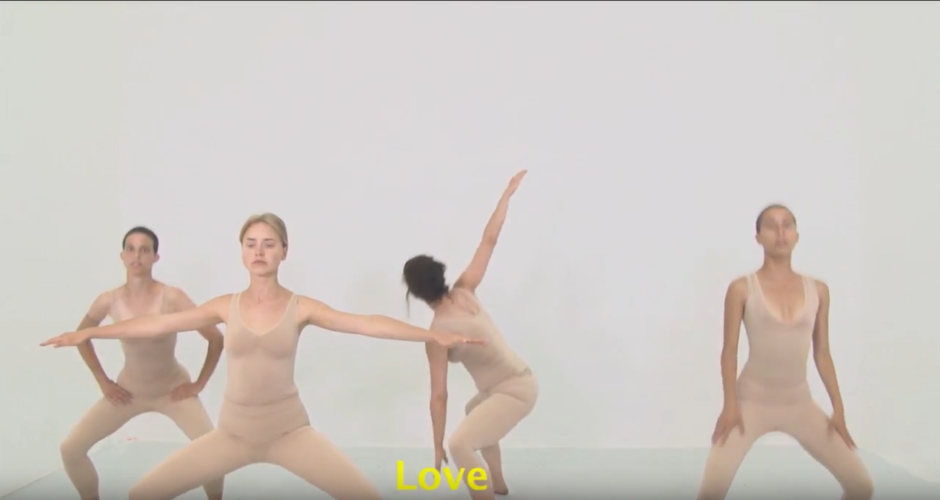
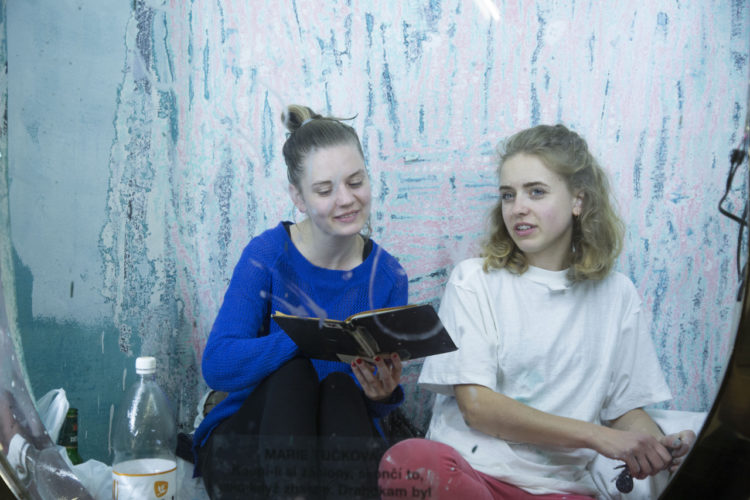
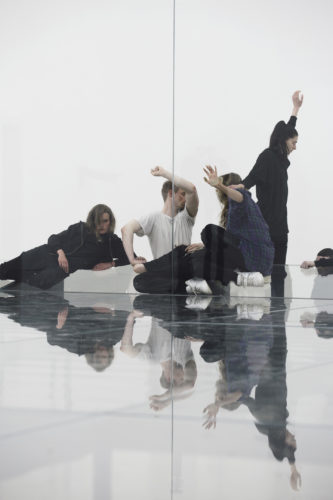
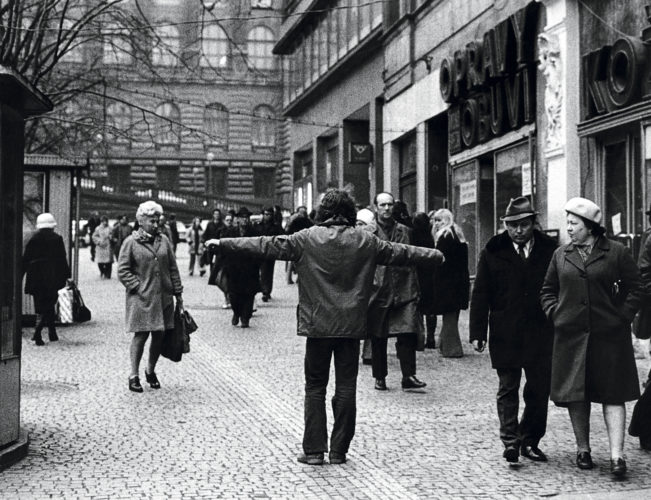
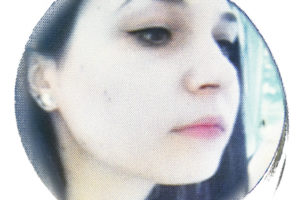
Comments are closed here.